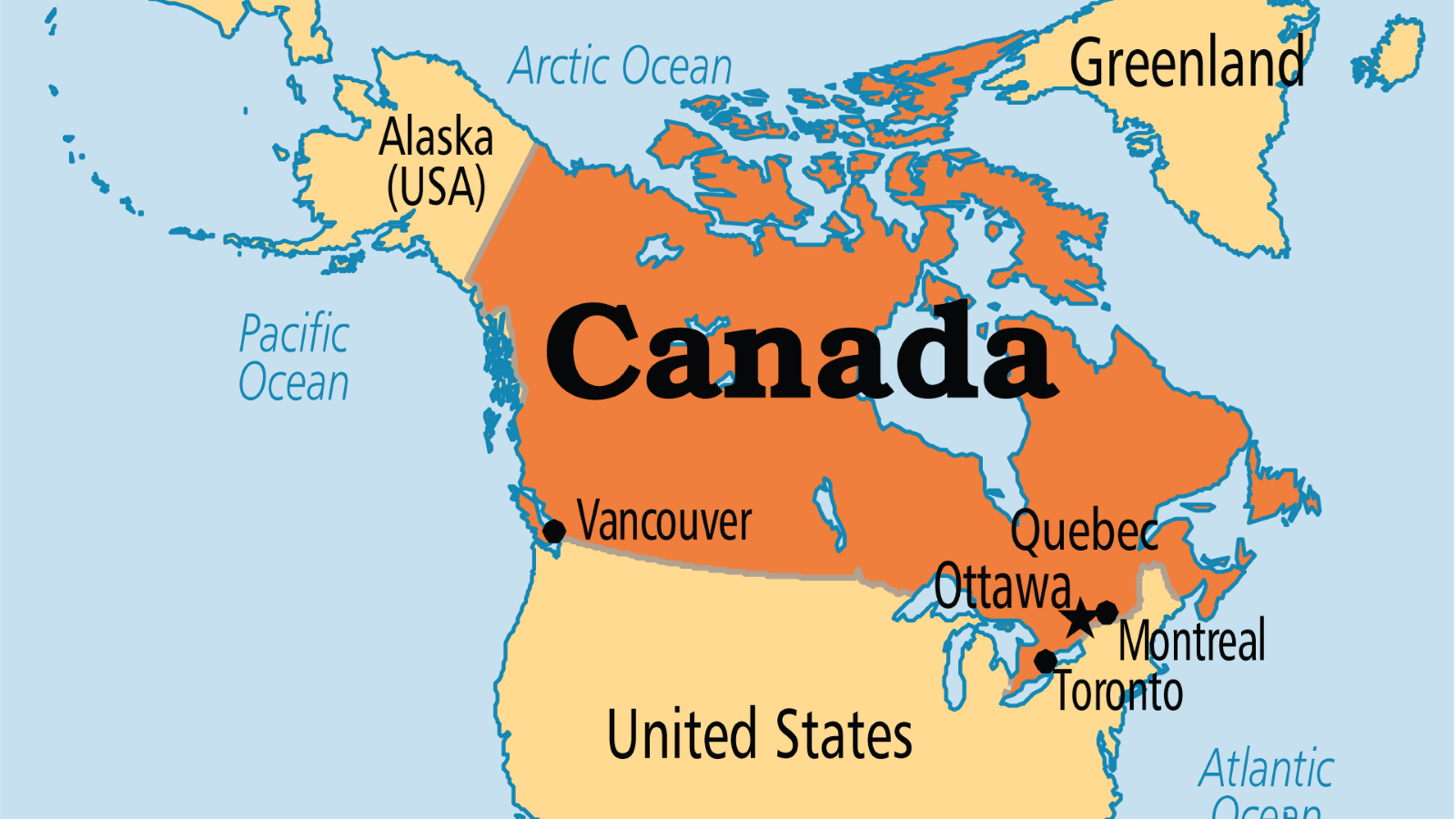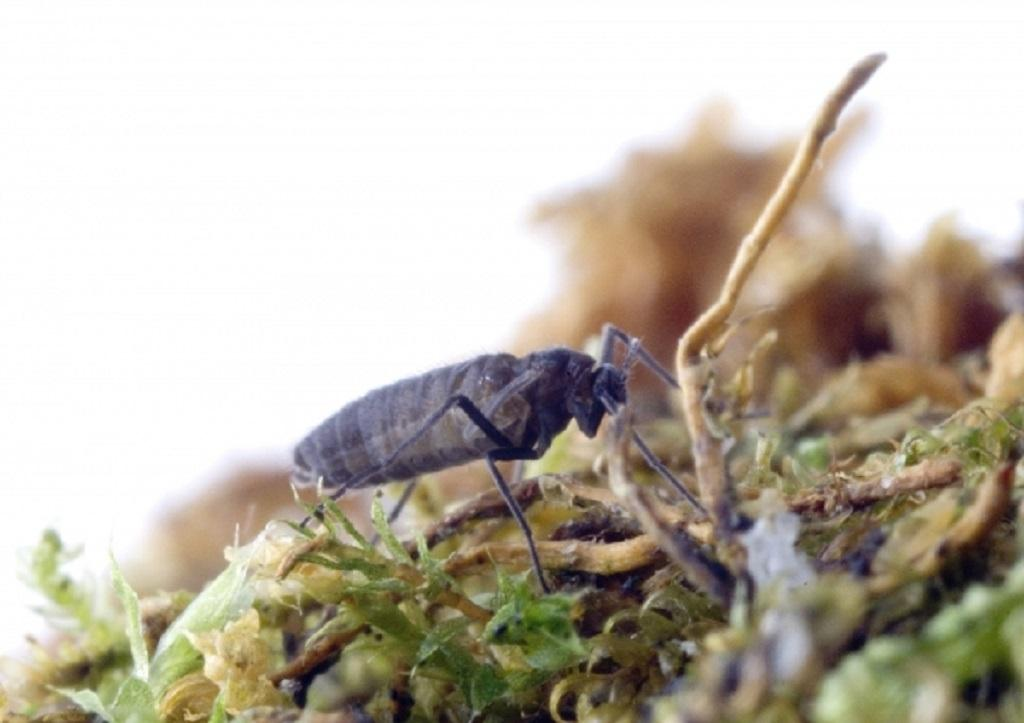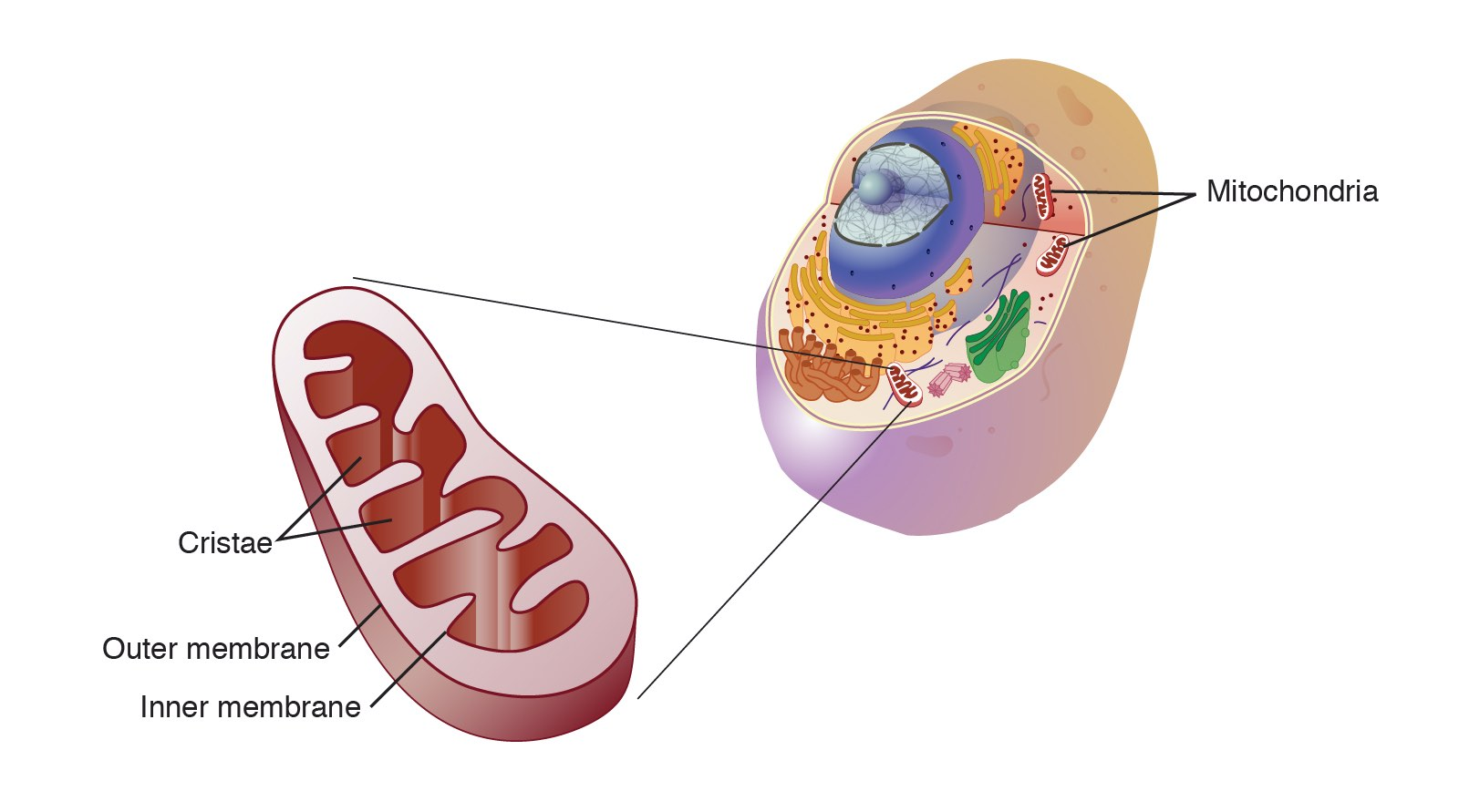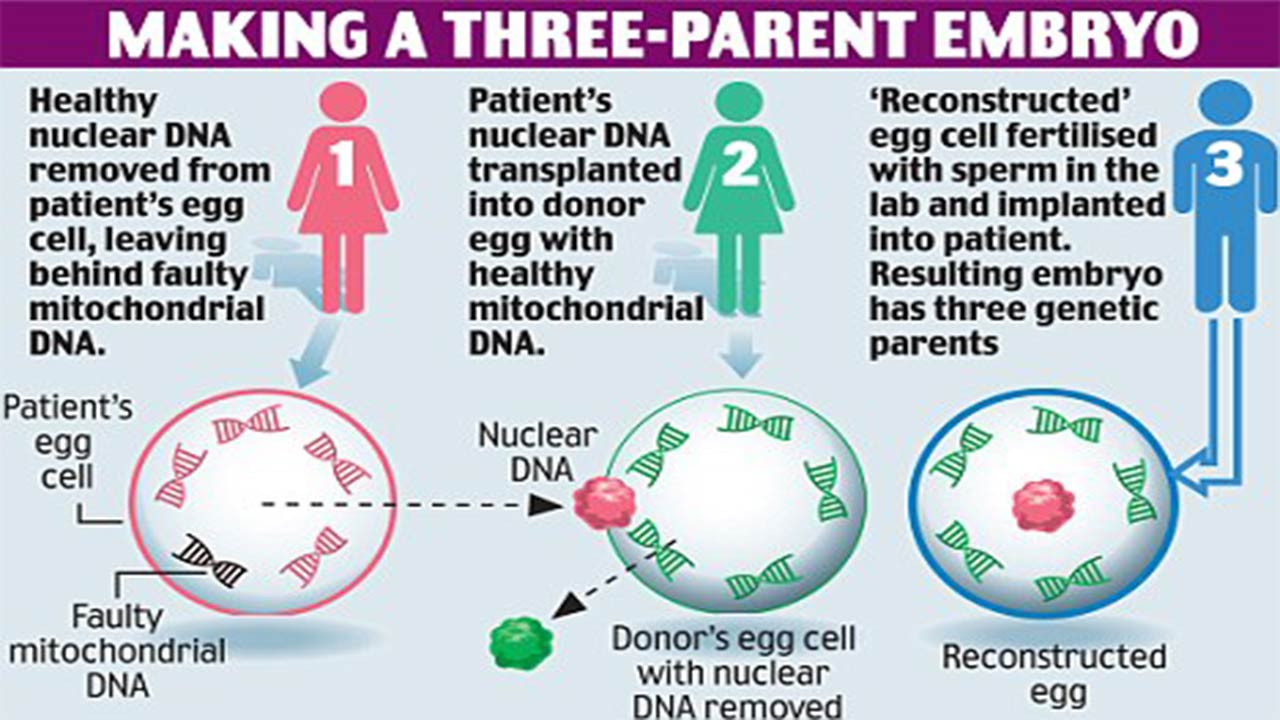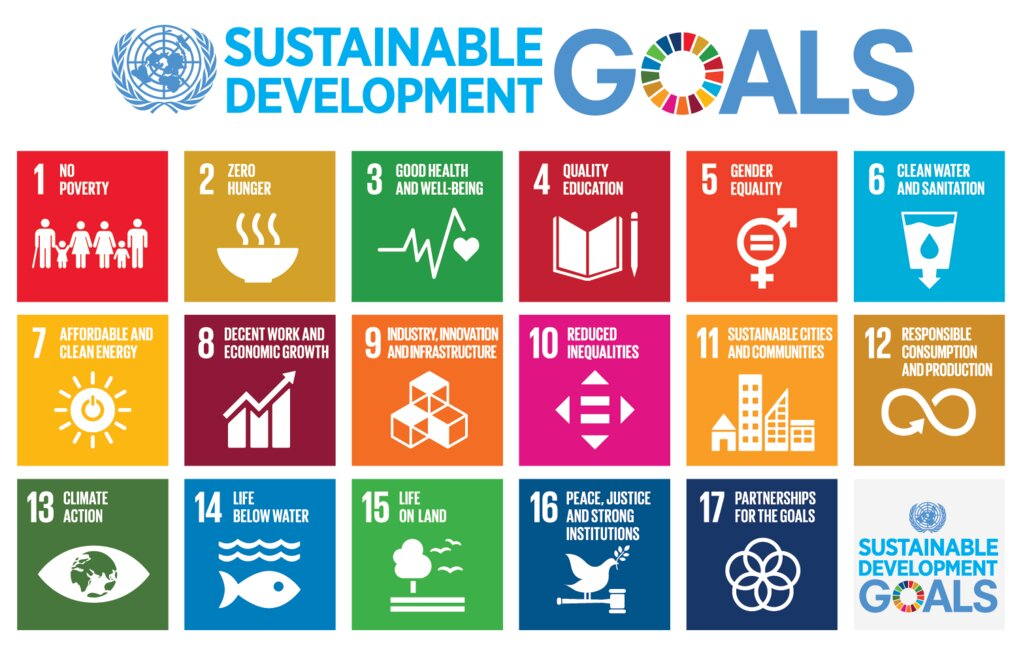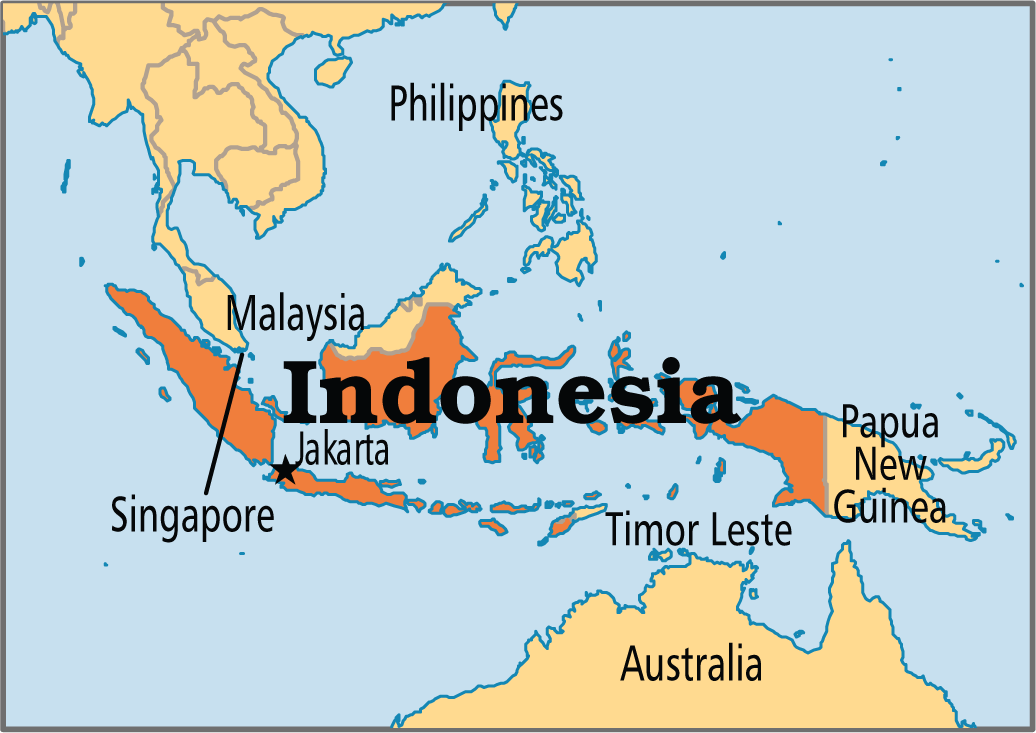Maps
International Relations
6th India-Canada Ministerial Dialogue on Trade and Investment
For Prelims: 6th India-Canada Ministerial Dialogue on Trade and Investment (MDTI), Clean technologies, Parliamentary structure, Information Technology, Biofuels, ANTRIX.
For Mains: Areas of Cooperation Between India and Canada.
Why in News?
Recently, the 6th India-Canada Ministerial Dialogue on Trade and Investment (MDTI) was held in Ottawa, Canada.
What are the Major Outcomes of the MDTI?
- Support for India as G20 Chair:
- The Canadian Minister expressed her support for India as the G20 Chair and its priorities in the G20 Trade and Investment Working Group.
- She expressed her intention to participate in the upcoming G-20 Trade and Investment Ministerial meeting in India scheduled for August 2023.
- The Canadian Minister expressed her support for India as the G20 Chair and its priorities in the G20 Trade and Investment Working Group.
- Enhanced Cooperation:
- The Ministers highlighted the importance of cooperation in sectors such as clean technologies for infrastructure development, critical minerals, electric vehicles and batteries, renewable energy/hydrogen, and artificial intelligence (AI).
- Critical Mineral Supply Chain Resiliency:
- The Ministers emphasised the importance of government-to-government coordination to promote critical mineral supply chain resiliency.
- They committed to an annual dialogue at the official level during the Prospectors and Developers Association Conference (PDAC) in Toronto to discuss mutual interests.
- The Ministers emphasised the importance of government-to-government coordination to promote critical mineral supply chain resiliency.
- Canada-India CEO Forum:
- The Ministers agreed to rework and relaunch the Canada-India CEO Forum with renewed focus and priorities.
- The CEO Forum would serve as a platform to enhance business-to-business engagement and could be announced at an agreed-upon early date.
- The Ministers agreed to rework and relaunch the Canada-India CEO Forum with renewed focus and priorities.
- Trade Mission and Delegation:
- The Canadian Minister announced her leadership of a Team Canada trade mission to India in October 2023.
- This mission aims to strengthen trade and investment ties, with a significant business delegation.
- The Canadian Minister announced her leadership of a Team Canada trade mission to India in October 2023.
What are the Areas of Cooperation Between India and Canada?
- About:
- India established diplomatic relations with Canada in 1947. India and Canada have a long-standing bilateral relationship based on shared democratic values, the multi-cultural, multi-ethnic and multi religious nature of two societies and strong people-to-people contacts.
- Political:
- India and Canada share commonalities in Parliamentary structure and procedures.
- In India, Canada is represented by the High Commission of Canada in New Delhi.
- Canada also has Consulates General in Bengaluru, Chandigarh and Mumbai, as well as trade offices in Ahmedabad, Chennai, Hyderabad and Kolkata.
- Commerce:
- India-Canada bilateral trade in goods reached approximately USD 8.2 billion in 2022, showing a 25% growth compared to 2021.
- The services sector was emphasised as a significant contributor to the bilateral relationship, with bilateral services trade valued at around USD 6.6 billion in 2022.
- Canadian Pension Funds have cumulatively invested around USD 55 billion in India and are increasingly viewing India as a favourable destination for investments.
- More than 600 Canadian companies have a presence in India and more than 1,000 companies are actively pursuing business in the Indian market.
- Indian companies in Canada are active in the field such as Information Technology, software, steel, natural resources and banking sectors.
- The India-Canada Free Trade Agreement is also under negotiation.
- An Early Progress Trade Agreement (EPTA) is expected to be signed in 2023 between India and Canada.
- The agreement will cover a wide range of areas including goods, services, investment, rules of origin, sanitary and phytosanitary measures, technical barriers to trade, and dispute settlement.
- An Early Progress Trade Agreement (EPTA) is expected to be signed in 2023 between India and Canada.
- India-Canada bilateral trade in goods reached approximately USD 8.2 billion in 2022, showing a 25% growth compared to 2021.
- Science and Technology:
- India’s Atomic Energy Regulatory Board (AERB) signed an Arrangement with the Canadian Nuclear Safety Commission (CNSC) on September 16, 2015 to exchange experiences in nuclear safety and regulatory issues.
- Indo-Canadian S&T cooperation has been primarily focussed on promoting Industrial R&D which has potential for application through development of new IP, processes, prototypes or products.
- Canada was a partner country for the Technology Summit held in New Delhi in November 2017.
- The Department of Earth Science and Polar Canada have started a programme for exchange of knowledge and scientific research on Cold Climate (Arctic) Studies.
- Under the “Mission Innovation” program, India is collaborating with Canada in various activities in the areas of Sustainable Biofuels (IC4).
- ANTRIX, the Commercial arm of ISRO, has launched several nanosatellites from Canada.
- ISRO in its 100th Satellite PSLV launched on January 12, 2018, also flew Canadian first LEO satellite, from Indian spaceport Sriharikota, Andhra Pradesh.
- Education and Culture:
- The Shastri Indo-Canadian Institute (SICI) is a unique bi-national organisation fostering, since 1968, education and cultural cooperation and collaboration between India and Canada.
- Canada was the Country of Focus at the 48th International Film Festival of India held in Goa in November 2017.
- Canada Post and India Post joined hands to issue a commemorative stamp on Diwali in 2017.
- Canada Post issued Diwali Stamps again in 2020 and 2021.
- In October 2020, Canada announced the voluntary repatriation of the ancient Annapurna statue which was illegally acquired by a Canadian collector and had been kept at University of Regina.
- The statue has since been handed over to India and has been placed inside Kashi Vishwanath temple in Varanasi in November 2021.
UPSC Civil Services Examination, Previous Year Questions (PYQs)
Q. In which one of the following groups are all the four countries members of G20? (2020)
(a) Argentina, Mexico, South Africa and Turkey
(b) Australia, Canada, Malaysia and New Zealand
(c) Brazil, Iran, Saudi Arabia and Vietnam
(d) Indonesia, Japan, Singapore and South Korea
Ans: (a)


Biodiversity & Environment
United Nations Forum on Forests
For Prelims: Sustainable Development Goals (SDGs), Food and Agriculture Organization (FAO), UN Economic and Social Council, United Nations Forum on Forests (UNFF), Small Island Developing States (SIDS).
For Mains: United Nations Forum on Forests (UNFF).
Why in News?
- The eighteenth session of the United Nations Forum on Forests (UNFF18), held in New York from May 8-12, 2023, brought together delegates from around the world to discuss the relationship between sustainable forest management (SFM), energy, and the achievement of the United Nations-mandated Sustainable Development Goals (SDGs).
What are the Major Highlights of UNFF18?
- Sustainable Forest Management (SFM) in Tropical Region:
- In a recent development, experts have underscored the significance of practicing SFM in tropical regions. With the surge in bioenergy consumption since 2013, there has been a mounting strain on forests, making the need for sustainable sourcing of tropical timber even more crucial.
- The rise in bioenergy usage, driven by the global push for renewable energy sources, has inadvertently created additional pressure on tropical forests. As bioenergy relies on biomass, such as wood pellets and chips, as fuel, the demand for timber has intensified. This has raised concerns about the potential negative impact on forest ecosystems, biodiversity, and the overall sustainability of these regions.
- By implementing sustainable practices, such as selective logging and reforestation, the long-term health and vitality of these forests can be safeguarded.
- In a recent development, experts have underscored the significance of practicing SFM in tropical regions. With the surge in bioenergy consumption since 2013, there has been a mounting strain on forests, making the need for sustainable sourcing of tropical timber even more crucial.
- Forest Ecosystems and Energy:
- Forestry director of the Food and Agriculture Organization (FAO), highlighted the significant contribution of forest ecosystems to renewable energy requirements.
- Over five billion people worldwide benefit from non-timber forest products, with forests providing 55% of these renewable energy needs.
- Forestry director of the Food and Agriculture Organization (FAO), highlighted the significant contribution of forest ecosystems to renewable energy requirements.
- Forests and Climate Change Mitigation:
- The Emissions Gap Report's findings underscore the immense climate mitigation potential that forests hold. Through processes such as carbon sequestration, forests act as carbon sinks, absorbing and storing substantial amounts of carbon dioxide from the atmosphere.
- By preserving and sustainably managing forests, nations can leverage this natural capacity to help bridge the emissions gap and achieve climate targets.
- Forests have the potential for reducing 5 gigatonnes of emissions.
- The Emissions Gap Report's findings underscore the immense climate mitigation potential that forests hold. Through processes such as carbon sequestration, forests act as carbon sinks, absorbing and storing substantial amounts of carbon dioxide from the atmosphere.
- Challenges and Countries Perspectives:
- India: India presented a case of a UNFF country-led initiative on long-term SFM and expressed concerns regarding wildfires and the limitations of current forest certification schemes.
- Saudi Arabia: Saudi Arabia highlighted the importance of preventing forest fires and urban expansion encroaching on forested areas.
- Suriname: Suriname, claiming to be the most forested and carbon-negative country, shared its experiences of economic pressures impacting its green cover and environmental policies.
- The country committed to deriving 23% of its net energy from renewable sources by 2025 and achieving carbon neutrality by 2060.
- Congo and the Dominican Republic: These countries stressed their commitment to forest conservation measures and called for strategies to reduce pressures on natural forests while improving livelihoods, given their heavy reliance on fuelwood.
- Australia: Australia mentioned that some species rely on fire for germination and shared information on mechanical fuel load reduction trials. The country emphasised the need to make wood residue markets financially feasible.
- Other Perspectives: Countries like Zhimin and Satkuru suggested replacing plastic sticks with residues of compacted bamboo or sawdust to produce briquettes and pellets, offering sustainable alternatives for energy production.
What is the United Nations Forum on Forests?
- About:
- The UNFF is an intergovernmental policy forum which promotes “management, conservation and sustainable development of all types of forests and to strengthen long-term political commitment to this end.
- UNFF was established in 2000 by the UN Economic and Social Council. The Forum has universal membership, and is composed of all Member States of the United Nations.
- Major Related Events:
- 1992 - UN Conference on Environment and Development adopts the Forest Principles” and Agenda 21.
- 1995/1997 - Intergovernmental Panel on Forests (1995) and Intergovernmental Forum on Forests (1997) are established to implement the Forest Principles from 1995 to 2000.
- 2000 - UNFF is established as a functional commission of the UN Economic and Social Council.
- 2006 - UNFF agrees on four Global Objectives on Forests.
- The Four Global Objectives on Forests:
- Reverse the loss of forest cover worldwide through sustainable forest management (SFM);
- Enhance forest-based economic, social and environmental benefits;
- Increase significantly the area of sustainably managed forests;
- Reverse the decline in official development assistance for SFM
- Mobilise increased financial resources for implementation of SFM.
- The Four Global Objectives on Forests:
- 2007 - UNFF adopts the UN Non-Legally Binding Instrument on All Types of Forests (Forest Instrument).
- 2009 – UNFF adopts decision on financing for sustainable forest management which calls for creation of a Facilitative Process to assist countries in reversing a 20-year decline in forest financing.
- The Facilitative Process has an initial focus on Small Island Developing States (SIDS) and Low Forest Cover Countries (LFCCs).
- 2011- The International Year of Forests, “Forests for People”.
UPSC Civil Services Examination, Previous Year Questions (PYQs)
Prelims
Q1. The FAO accords the status of ‘Globally Important Agricultural Heritage System (GIAHS)’ to traditional agricultural systems. What is the overall goal of this initiative? (2016)
- To provide modern technology, training in modern farming methods and financial support to local communities of identified GIAHS so as to greatly enhance their agricultural productivity.
- To identify and safeguard eco-friendly traditional farm practices and their associated landscapes, agricultural biodiversity and knowledge systems of the local communities.
- To provide Geographical Indication status to all the varieties of agricultural produce in such identified GIAHS.
Select the correct answer using the code given below:
(a) 1 and 3 only
(b) 2 only
(c) 2 and 3 only
(d) 1, 2 and 3
Ans: (b)
Q2. At the national level, which ministry is the nodal agency to ensure effective implementation of the Scheduled Tribes and Other Traditional Forest Dwellers (Recognition of Forest Rights) Act, 2006? (2021)
(a) Ministry of Environment, Forest and Climate Change
(b) Ministry of Panchayati Raj
(c) Ministry of Rural Development
(d) Ministry of Tribal Affairs
Ans-(d)
Q3. A particular State in India has the following characteristics: (2012)
- It is located on the same latitude which passes through northern Rajasthan.
- It has over 80% of its area under forest cover.
- Over 12% of forest cover constitutes the Protected Area Network in this State.
Which one among the following States has all the above characteristics?
(a) Arunachal Pradesh
(b) Assam
(c) Himachal Pradesh
(d) Uttarakhand
Ans: (a)
Mains
Q. “The most significant achievement of modern law in India is the constitutionalization of environmental problems by the Supreme Court.” Discuss this statement with the help of relevant case laws. (2022)

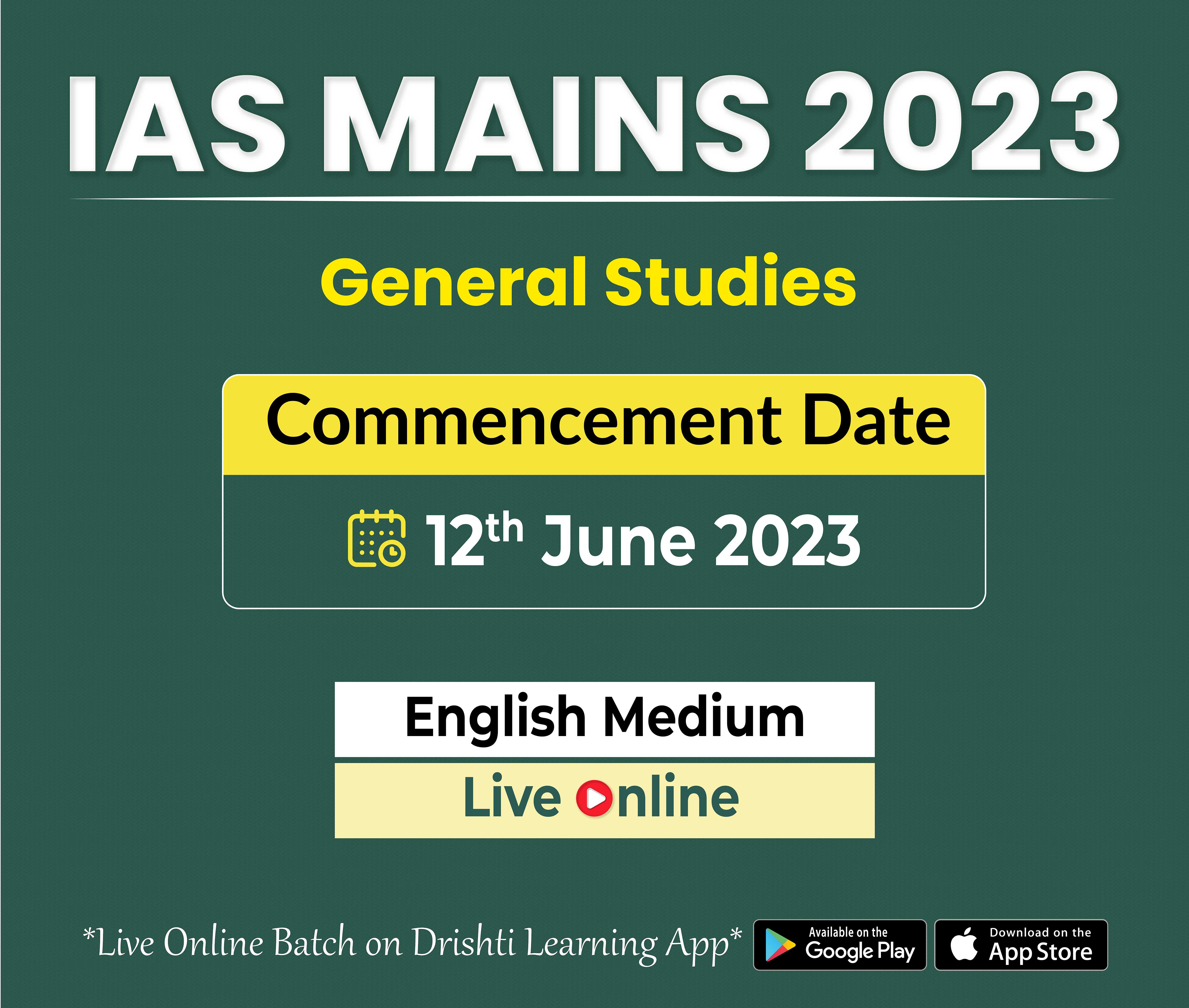
Biodiversity & Environment
Phase Out Methane Emissions By 2030
For Prelims: Methane Gas, Related Initiatives, COP 28, Climate Change, Net Zero emissions
For Mains: Impacts of methane emissions on global warming, Role of hydrocarbons in the transition to new energy systems, Significance of climate technologies in climate mitigation
Why in News?
Recently, Sultan Ahmed Al Jaber, the President-Designate of COP28 has called upon the oil and gas industry to phase out methane emissions by 2030, as Methane have emerged as a critical concern in the fight against climate change. And align with comprehensive net-zero emission plans by or before 2050.
- The significance of inclusivity and the active involvement of developing nations in climate action and the energy transition, as well as the adoption of technologies for climate mitigation, was strongly emphasized.
- COP28, or the 28th United Nations Climate Change conference is scheduled to be held between November 30 and December 12 in the UAE.
What is Methane?
- About:
- Methane is the simplest hydrocarbon, consisting of one carbon atom and four hydrogen atoms (CH4).
- It is flammable and is used as a fuel worldwide.
- Methane is powerful greenhouse gas.
- Methane has more than 80 times the warming power of carbon dioxide over the first 20 years of its lifetime in the atmosphere.
- It has a shorter lifespan in the atmosphere compared to carbon dioxide.
- The common sources of methane are oil and natural gas systems, agricultural activities, coal mining, and wastes.
- Methane is the simplest hydrocarbon, consisting of one carbon atom and four hydrogen atoms (CH4).
- Impact:
- More Global Warming Potential:
- The International Energy Agency (IEA) reports that fossil fuel operations generate over one-third of all methane emissions from human activity.
- It is nearly 80-85 times more potent than carbon dioxide in terms of its global warming capacity.
- This makes it a critical target for reducing global warming more quickly while simultaneously working to reduce other greenhouse gases.
- Methane is responsible for around 30% of the rise in global temperatures since the Industrial Revolution.
- Promotes Generation of Tropospheric Ozone:
- Increasing emissions are driving a rise in tropospheric ozone air pollution, which causes more than one million premature deaths annually.
- More Global Warming Potential:
What is the Role of Hydrocarbons in Energy Transition from Methane?
- Transition Role:
- Hydrocarbons can play a transitional role during the shift to new energy systems by providing a reliable and readily available source of energy.
- Bridge Fuel:
- They can serve as a bridge fuel between high-carbon fossil fuels and cleaner alternatives, helping to meet energy demand while reducing carbon emissions.
- Energy System Stability:
- Hydrocarbons contribute to maintaining energy system stability during the initial phases of integrating intermittent renewable energy sources.
- Existing Infrastructure:
- The infrastructure for extracting, processing, and distributing hydrocarbons is already established, allowing for a smoother transition to new energy systems.
- Carbon Intensity Reduction:
- Efforts should focus on minimizing the carbon footprint of hydrocarbons by implementing cleaner technologies and practices throughout the production and consumption processes.
How can Developing Nations be Included in the Energy Transition?
- Increase Financial Support:
- Provide increased climate finance to developing nations to facilitate their transition to clean energy sources and technologies.
- Technology Transfer:
- Facilitate the transfer of clean energy technologies from developed countries to developing nations, ensuring access to affordable and efficient solutions.
- Capacity Building:
- Invest in training programs and knowledge-sharing initiatives to build the capacity of developing nations in implementing and managing clean energy projects.
- Policy Support:
- Assist developing countries in developing and implementing supportive policies and regulations that encourage the adoption of renewable energy and energy-efficient practices.
- Public-Private Partnerships:
- Foster collaborations between public and private sectors to leverage resources, expertise, and innovation in supporting the energy transition of developing nations.
What is the Role of Climate Technologies in Climate Mitigation?
- Renewable Energy Technologies:
- Climate technologies encompass a wide range of renewable energy sources such as solar, wind, hydro, and geothermal power.
- These technologies enable the generation of clean and sustainable energy, reducing reliance on fossil fuels and lowering carbon emissions.
- Energy Efficiency Technologies:
- Climate technologies focus on enhancing energy efficiency in various sectors, including buildings, transportation, and industries.
- Building technologies such as smart meters, energy-efficient appliances, and insulation that improve energy performance.
- Batteries and energy storage enable the integration of variable renewables and provide backup power for grid stability and reliability.
- These technologies aim to reduce energy consumption and minimize wastage, leading to significant emissions reductions.
- Climate technologies focus on enhancing energy efficiency in various sectors, including buildings, transportation, and industries.
- Carbon Capture, Utilization, and Storage (CCUS):
- CCUS technologies capture carbon dioxide emissions from power plants and industrial facilities, preventing them from being released into the atmosphere.
- The captured carbon is then stored underground or utilized in other applications, effectively reducing greenhouse gas emissions.
- CCUS technologies capture carbon dioxide emissions from power plants and industrial facilities, preventing them from being released into the atmosphere.
- Sustainable Transportation Technologies:
- Climate technologies promote the development and adoption of low-carbon transportation solutions such as electric vehicles (EVs), hydrogen fuel cells, and advanced biofuels.
- These technologies help reduce emissions from the transportation sector, which is a significant contributor to greenhouse gas emissions.
- Circular Economy Technologies:
- Optimizes resource use and minimizes waste by designing products and systems that can be reused, repaired, recycled, or biodegraded.
What are the Initiatives to Tackle Methane Emissions?
- Indian:
- ‘Harit Dhara’ (HD):
- Indian Council of Agricultural Research (ICAR) has developed an anti-methanogenic feed supplement ‘Harit Dhara’ (HD), which can cut down cattle methane emissions by 17-20% and can also result in higher milk production.
- India Greenhouse Gas Program:
- The India GHG Program led by WRI India (non-profit organization), Confederation of Indian Industry (CII) and The Energy and Resources Institute (TERI) is an industry-led voluntary framework to measure and manage greenhouse gas emissions.
- The programme builds comprehensive measurement and management strategies to reduce emissions and drive more profitable, competitive and sustainable businesses and organisations in India.
- The India GHG Program led by WRI India (non-profit organization), Confederation of Indian Industry (CII) and The Energy and Resources Institute (TERI) is an industry-led voluntary framework to measure and manage greenhouse gas emissions.
- National Action Plan on Climate Change (NAPCC):
- NAPCC was launched in 2008 which aims at creating awareness among the representatives of the public, different agencies of the government, scientists, industry and the communities on the threat posed by climate change and the steps to counter it.
- Bharat Stage-VI Norms:
- India shifted from Bharat Stage-IV (BS-IV) to Bharat Stage-VI (BS-VI) emission norms.
- ‘Harit Dhara’ (HD):
- Global:
- Methane Alert and Response System (MARS):
- MARS will integrate data from a large number of existing and future satellites that have the ability to detect methane emission events anywhere in the world, send out notifications to the relevant stakeholders to act on it.
- Global Methane Pledge:
- At the Glasgow climate conference (UNFCCC COP 26) in 2021, nearly 100 countries had come together in a voluntary pledge, referred to as the Global Methane Pledge, to cut methane emissions by at least 30% by 2030 from the 2020 levels.
- India is not a part of Global Methane Pledge.
- At the Glasgow climate conference (UNFCCC COP 26) in 2021, nearly 100 countries had come together in a voluntary pledge, referred to as the Global Methane Pledge, to cut methane emissions by at least 30% by 2030 from the 2020 levels.
- Global Methane Initiative (GMI):
- It is an international public-private partnership focused on reducing barriers to the recovery and use of methane as a clean energy source.
- Methane Alert and Response System (MARS):
UPSC Civil Services Examination, Previous Year Questions (PYQs)
Prelims
Q1. Which of the following statements is/are correct about the deposits of ‘methane hydrate’? (2019)
- Global warming might trigger the release of methane gas from these deposits.
- Large deposits of ‘methane hydrate’ are found in Arctic Tundra and under the sea floor.
- Methane in atmosphere oxidizes to carbon dioxide after a decade or two.
Select the correct answer using the code given below.
(a) 1 and 2 only
(b) 2 and 3 only
(c) 1 and 3 only
(d) 1, 2 and 3
Ans: (d)
Q2. Consider the following: (2019)
- Carbon monoxide
- Methane
- Ozone
- Sulphur dioxide
Which of the above are released into atmosphere due to the burning of crop/biomass residue?
(a) 1 and 2 only
(b) 2, 3 and 4 only
(c) 1 and 4 only
(d) 1, 2, 3 and 4
Ans: (d)


Indian Economy
E-Invoicing and Curbing Tax Evasion
For Prelims: E-Invoicing, Tax Evasion, GST, Automated Return Scrutiny Model, e-Way Bill, Input Tax Credit.
For Mains: Reducing the threshold of E-Invoicing, its significance and Related Concerns, Tax Evasion.
Why in News?
Recently, the Government has lowered the threshold for businesses to generate e-Invoice for Business-to-Business (B2B) transactions, from Rs 10 crore to Rs 5 crore with the aim to curb Tax Evasion and increase compliance under the Goods and Services Tax (GST) Regime.
- The government has also rolled out the Automated Return Scrutiny Module (ARSM) for GST returns in a backend application for central tax officers.
What is the Automated Return Scrutiny Module?
- The ARSM is a part of the ACES (Automation of Central Excise and Service Tax)-GST backend application that uses data analytics to identify risks and discrepancies in GST returns.
- This helps tax officers to scrutinize the GST returns of Centre Administered Taxpayers who are selected based on the risks identified by the system.
- The module also generates alerts if any non-compliance is detected.
- The automated return scrutiny module has already commenced with the scrutiny of GST returns for FY 2019-20, with the requisite data already with the tax officers.
What is e-Invoicing Under GST?
- About:
- e-Invoicing is a system where B2B (Business to Business) invoices and some other documents are electronically authenticated by the GSTN (Goods and Service Tax Network) for further use on the GST portal.
- e-Invoicing involves submitting already generated standard invoices on a common e-invoice portal, automating reporting with a one-time input of invoice details.
- An identification number is issued against every invoice by the Invoice Registration Portal (IRP), which transfers the invoice information in real-time to the GST portal and the e-Way Bill portal.
- E-Way Bill is a compliance mechanism wherein by way of a digital interface the person causing the movement of goods uploads the relevant information prior to the commencement of movement of goods and generates an e-way bill on the GST portal, and therefore facilitating faster movement of Goods.
- This eliminates manual data entry while filing returns and generating e-way bills.
- Objectives:
- The GST Council in its 37th meeting in September 2019 had approved the standard of e-invoice with the primary objective to enable interoperability across the entire GST ecosystem.
- Significance:
- With a uniform invoicing system, the tax authorities are able to pre-populate the return and reduce the reconciliation issues.
- With a high number of cases involving fake invoices and fraud availment of input tax credit, GST authorities have pushed for implementation of this e-invoicing system which is expected to help to curb the actions of tax evaders and reduce the number of frauds as the tax authorities will have access to data in real-time.
What is the Significance of Lowering Thresholds for e-Invoice?
- Lowering the threshold for e-invoicing is significant because it expands the compliance mandate for more businesses, especially small and medium-sized enterprises, and helps boost GST revenue collections.
- It is also expected to curb tax evasion, broaden the GST tax base, and provide more data to tax authorities for better compliance.
- By requiring more businesses to adopt e-invoicing, the government aims to reduce mismatch errors and fraudulent activities associated with the generation of fake invoices.
What are the Concerns related to the Decision?
- Lowering the threshold for e-invoicing has raised some concerns for businesses, especially small and medium enterprises (SMEs), as they may face challenges in adapting to the new requirements and investing in the necessary technology to comply with e-invoicing norms. This could increase their compliance costs and pose a burden on their cash flows.
- Additionally, there may be challenges in terms of the capacity and preparedness of the GST Network (GSTN) to handle the increased load of e-invoices generated by a larger number of taxpayers. This could lead to technical glitches and delays in invoice generation, which could impact the smooth functioning of businesses.
- The maximum amount of fraud happens in B2C (Business to Consumer) invoices as no ITC (Input Tax Credit) is involved. As of now, e-invoicing is not applicable to B2C transactions.
What are the other Measures to Curb Tax Evasion?
Way Forward
- The government can provide support to small and medium enterprises in adopting the new system, including providing training and resources to help businesses comply with the new regulations.
- Additionally, steps can be taken to address concerns around data privacy and security to ensure that businesses feel comfortable sharing their data in real-time.
- e-invoicing applies only to B2B invoices. Thus, a separate workflow must be in place for delivery challans, bill of supply, job work and other similar transactions.
UPSC Civil Services Examination, Previous Year Questions (PYQs)
Q. Which one of the following effects of creation of black money in India has been the main cause of worry to the Government of India?
(a) Diversion of resources to the purchase of real estate and investment in luxury housing.
(b) Investment in unproductive activities and purchase of precious stones, jewellery, gold, etc.
(c) Large donations to political parties and growth of regionalism.
(d) Loss of revenue to the State Exchequer due to tax evasion.
Ans: (d)


Indian Polity
Default Bail
For Prelims: Default Bail, Supreme Court, Section 167(2) of the Criminal Procedure Code (CrPC), Article 21, Article 22, Fundamental Rights.
For Mains: Default Bail and related Provisions. Types of Bail.
Why in News?
The Supreme Court (SC) has instructed lower courts to consider Default Bail pleas in criminal cases when the charge sheet is not filed within 60 or 90 days, allowing them to grant default bail independently without relying on its own judgment of Ritu Chhabaria versus Union of India (26th April, 2023).
- The observations were made by the SC while hearing an Enforcement Directorate (ED) appeal, seeking the recall of the Ritu Chhabaria judgment.
- The Ritu Chhabaria judgment held that “the right of default bail under Section 167(2) of the Criminal Procedure Code (CrPC) is not merely a statutory right, but a fundamental right that flows from Article 21 of the Constitution” to protect accused persons from the “unfettered and arbitrary power of the State”.
What is Default Bail?
- About:
- This is a right to bail that accrues when the police fail to complete investigation within a specified period in respect of a person in judicial custody.
- It is also known as Statutory Bail.
- This is enshrined in Section 167(2) of the Code of Criminal Procedure (CrPC).
- This is a right to bail that accrues when the police fail to complete investigation within a specified period in respect of a person in judicial custody.
- Section 167(2) of the CrPC:
- If the police are unable to complete an investigation within a specified period, a person in judicial custody has the right to seek bail.
- When the police cannot finish the investigation within 24 hours, they present the suspect before a magistrate who decides whether the suspect should be held in police custody or judicial custody.
- According to Section 167(2) of the CrPC, the magistrate can order the accused person to be detained in police custody for up to 15 days. If more time is needed, the magistrate can authorize the accused person's detention in judicial custody, which means jail. However, the accused cannot be held for more than:
- Ninety days if the investigating authority is looking into a crime that is punishable by death, life imprisonment, or imprisonment for at least ten years.
- Sixty days if the investigating authority is handling any other offense.
- Special Cases:
- Some special laws like the Narcotic Drugs and Psychotropic Substances Act, the time period for investigation may be different, such as 180 days.
- In the Unlawful Activities (Prevention) Act 1967, the default limit is 90 days only, which can be extended to another 90 days.
- This extension can be granted only on a report by the Public Prosecutor indicating the progress made in the investigation and giving reasons to keep the accused in continued detention.
- These provisions show that the extension of time is not automatic but requires a judicial order.
- This extension can be granted only on a report by the Public Prosecutor indicating the progress made in the investigation and giving reasons to keep the accused in continued detention.
What are the Previous Judgements Related to Default Bail?
- CBI vs Anupam J. Kulkarni (1992):
- The SC Held that a magistrate can authorize police custody for a maximum of 15 days after the arrest of the accused. After this period, any further detention must be in judicial custody, except in cases where the same accused is implicated in a different case arising from a separate incident or transaction. In such situations, the magistrate may consider authorizing police custody again.
- Uday Mohanlal Acharya vs. State of Maharashtra (2001):
- The SC while relying upon the judgment of Sanjay Dutt vs State, held that the accused shall be said to avail of his right to default bail when he files an application for the same and not when he is released on default bail.
- If an order of default bail is passed in favour of the accused, but he/she fails to furnish bail and a charge sheet is filed in the meantime, then the right to default bail shall stand extinguished.
What are the Other Types of Bail in India?
- Regular Bail: It is a direction given by the Court (any Court within the country) to release a person who is already under arrest and kept in police custody. For such Bail, a person can file an application under Section 437 and 439 of the CrPC.
- Interim Bail: Bail granted for a temporary and short period by the Court till the application seeking Anticipatory Bail or Regular Bail is pending before a Court.
- Anticipatory Bail: A direction issued to release a person on Bail even before the person is arrested. In this situation, there is apprehension of arrest and the person is not arrested before the Bail is granted.
- For such Bail, a person can file an application under Sec. 438 of the CrPC. It is issued only by the Sessions Court and High Court.
What are the Constitutional Provisions Related to Arrest?
- Article 22 grants protection to persons who are arrested or detained. Detention is of two types, namely, punitive and preventive.
- Punitive detention is to punish a person for an offence committed by him after trial and conviction in a court.
- Preventive detention, on the other hand, means detention of a person without trial and conviction by a court.
- Article 22 has Two Parts: The first part deals with the cases of ordinary law and the second part deals with the cases of preventive detention law.
| Rights Given Under Punitive Detention | Rights Given Under Preventive Detention |
|
|
|
|
|
|
|
|
|
|


Important Facts For Prelims
Eretmoptera Murphyi
Why in News?
According to a study by the British Antarctic Survey (BAS), a tiny flightless Midge (small insect) called Eretmoptera murphyi is changing the soil composition of Antarctica's Signy Island.
- It is an invasive species on Antarctic Signy Island.
What is Eretmoptera Murphyi?
- About:
- It is a native of South Georgia, a sub-Antarctic Island, and was accidentally introduced to Signy in the 1960s during a botany experiment. Its proliferation became apparent in the 1980s.
- Eretmoptera murphyi feasts on dead organic matter and has led to faster plant decomposition, thus increasing the soil nitrate levels by three-five times compared to places on the island where the midge (small insects which bite) is absent and only native invertebrate species live.
- High levels of nitrate can be toxic for other plant species, and it can also contaminate groundwater. High levels of nitrate in water can lead to excessive algae growth, which can deplete oxygen levels and harm aquatic life.
- Cause for the Spread:
- Experts believe that the spread of this midge, murphyi in Antarctica may have been caused by humans who carried insects on their shoes.
- Concerns:
- The midge can also survive in water, which raises concerns that it could spread to other islands.
- It has become a big problem as the tiny insect has spread to a much larger area with multiplying populations.
- Antarctica has a unique ecosystem that is vulnerable to invasive species, and the midge invasion highlights that even harsh conditions can no longer protect it.
- The activity of the midges, along with climate change, may also create conditions for other invasive species to become established and accelerate the effects of climate change.


Important Facts For Prelims
Mitochondrial Replacement Therapy
Why in News?
The recent news of a baby born in the UK with three parents' DNA has sparked curiosity and discussions about the scientific breakthrough behind this remarkable achievement.
- This revolutionary technique, known as mitochondrial replacement therapy (MRT) or three-parent IVF, aims to prevent the inheritance of mitochondrial diseases.
What is Mitochondria?
- About:
- Mitochondria are membrane-bound organelles found in the cells of most eukaryotic organisms.
- They are often referred to as the "powerhouses" of cells because they generate the majority of the cell's energy in the form of adenosine triphosphate (ATP).
- Functions:
- Mitochondria carry out cellular respiration, a process that converts nutrients into ATP.
- Mitochondria convert energy from carbohydrates, fats, and proteins into a usable form for the cell.
- They metabolize glucose to produce ATP, which powers various cellular processes.
- Mitochondria participate in cell signaling pathways, influencing processes like cell growth, differentiation, and apoptosis.
- Inheritance:
- Mitochondria have their own DNA, known as mitochondrial DNA (mtDNA), which encodes a small number of essential proteins.
- In most animals, mtDNA is inherited solely from the mother.
- Mutations in mtDNA can lead to mitochondrial disorders and various health conditions.
- Mitochondrial Diseases:
- Certain mutations in mitochondria can lead to mitochondrial diseases, affecting energy production and impacting various organs, including the brain, nerves, muscles, kidneys, heart, and liver.
- These diseases can result in severe symptoms, such as organ failure, muscle wastage, and even brain damage. Unfortunately, there is no cure for mitochondrial diseases, but they can be managed to some extent.
- Few examples of mitochondrial diseases are Leigh Syndrome, Kearns-Sayre syndrome (KSS), Mitochondrial Myopathy and Mitochondrial DNA Depletion Syndrome.
What is Mitochondrial Donation Treatment (MDT)/MRT?
- About:
- To address the issue of mitochondrial diseases, scientists and researchers developed an advanced In Vitro Fertilization (IVF) technique called Mitochondrial Donation Treatment (MDT) or three-parent IVF.
- This technique involves a complex process to ensure that the baby inherits healthy mitochondria while carrying the genetic material from both biological parents.
- To address the issue of mitochondrial diseases, scientists and researchers developed an advanced In Vitro Fertilization (IVF) technique called Mitochondrial Donation Treatment (MDT) or three-parent IVF.
- The Scientific Process:
- Identifying Suitable Candidates:
- The procedure is specifically intended for couples who wish to have their genetic child but do not want to use a donor egg.
- Selection of Donor and Biological Parents:
- The biological mother, who has a mitochondrial disease, provides her eggs, which are fertilized by the biological father's sperm.
- Additionally, a separate female donor with healthy mitochondria is involved.
- The biological mother, who has a mitochondrial disease, provides her eggs, which are fertilized by the biological father's sperm.
- Mitochondrial Replacement:
- The genetic material (DNA) from the donor's egg is extracted and replaced with the genetic material from the biological parents.
- This creates an embryo with the parents' DNA and the donor's mitochondria.
- The genetic material (DNA) from the donor's egg is extracted and replaced with the genetic material from the biological parents.
- Implantation and Pregnancy:
- The modified embryo is then implanted in the uterus and carried to full term, resulting in the birth of a baby free from the mother's mitochondrial disease.
- Identifying Suitable Candidates:
- Potential Side Effects:
- While the procedure has shown promising results, it is not without minimal risks. In some cases, a small amount of faulty maternal mitochondria may be inadvertently passed on during the procedure.
- Further research and published data are needed to establish consensus and refine the technique for improved outcomes.
- Legislation and Approval:
- The UK government amended its law in 2015 to allow mitochondrial replacement therapy, and the Newcastle Fertility Centre became the first licensed center to perform the procedure in 2017.
- Mitochondrial Disease Statistics:
- Globally, an estimated 1 in 5,000 people have a genetic mitochondrial disease.
- Mitochondrial disorders affect approximately one in 6,500 babies in the UK, and around 12,000 people in the country live with such conditions.
- In the United States, an estimated 1,000 to 4,000 babies with mitochondrial disease are born each year.
- Globally, an estimated 1 in 5,000 people have a genetic mitochondrial disease.
UPSC Civil Services Examination, Previous Year Questions (PYQs)
Q1. In the context of hereditary diseases, consider the following statements: (2021)
- Passing on mitochondrial diseases from parent to child can be prevented by mitochondria replacement therapy either before or after in vitro fertilization of the egg.
- A child inherits mitochondrial diseases entirely from mother and not from father.
Which of the statements given above is/are correct?
(a) 1 only
(b) 2 only
(c) Both 1 and 2
(d) Neither 1 nor 2
Ans: (c)


Important Facts For Prelims
Y20 Consultation Event
Why in News?
Recently, as a part of India’s G20 Presidency, the Youth 20 (Y20) group’s Y20 Consultation was held at University of Kashmir, to consult the youth of the nation on ideas for a better tomorrow and draft an agenda for action on ‘Climate Change and Disaster Risk Reduction: Making Sustainability a Way of Life’.
What are the Highlights of Y20 Consultation Event?
- Background:
- India assumed the Presidency of G20 on 1st December, 2022 for a period of 1 year i.e., up to 30th November 2023. India’s theme for its presidency is enshrined in its civilizational value system of ‘Vasudeva Kutumbakam’ (which is drawn from the ancient Sanskrit text of the Maha Upanishad). Hence our theme - 'One Earth, One Family, One Future'.
- Under the framework of G20 Presidency, the Department of Youth Affairs has been entrusted with the responsibility to organise Youth 20 Summit-2023.
- Youth20 is one of the official Engagement Groups of the G20 and provides a platform for youth to express their perspectives and ideas on G20 priorities.
- India assumed the Presidency of G20 on 1st December, 2022 for a period of 1 year i.e., up to 30th November 2023. India’s theme for its presidency is enshrined in its civilizational value system of ‘Vasudeva Kutumbakam’ (which is drawn from the ancient Sanskrit text of the Maha Upanishad). Hence our theme - 'One Earth, One Family, One Future'.
- Five Themes:
- Climate Change and Disaster Risk Reduction: Making Sustainability a Way of Life
- Future of Work: Industry 4.0, Innovation, & 21st Century Skills
- Peacebuilding and Reconciliation: Ushering in an Era of No War
- Shared Future: Youth in Democracy and Governance
- Health, Well-being & Sports: Agenda for Youth
- Participation:
- 17 Youth delegates from G20 countries like Indonesia, Mexico, Turkey, Russia, Japan, Republic of Korea, United States, Brazil and Nigeria.
- Students from University of Kashmir and schools around J&K also participated in the event among others.
- Areas of Discussion:
- Four panel discussions were held with themes:
- Impact of Climate Change on Biodiversity and Human Well-Being
- Disaster Risk Reduction for Safe Tomorrow
- Green Energy- Innovations and Opportunities
- Water Resources: Challenges and Prospects
- Four panel discussions were held with themes:


Rapid Fire
Rapid Fire Current Affairs
Moroccan Locust Outbreak
The Moroccan locust outbreak in Afghanistan's wheat-producing regions is posing a significant threat to the country's food security and economy. The outbreak, affecting eight provinces, is expected to destroy 700,000-1.2 million tonnes of wheat, equivalent to a quarter of the annual harvest. If left untreated, the locust population could multiply by a hundredfold in the next year, exacerbating the food security crisis in Afghanistan and neighboring countries.
The Moroccan locusts are known as the most economically damaging plant pests worldwide. The impact extends beyond the wheat crop, as the Moroccan locusts consume over 150 species of plants, including tree crops, pastures, and various food crops grown in Afghanistan.
Moroccan locusts, scientifically known as “Dociostaurus maroccanus”.They belong to the family Acrididae, which includes grasshoppers and locusts. These locusts are known for their ability to form swarms, causing significant agricultural damage in the regions they infest. They are medium to large-sized insects, with adults typically measuring around 4-5 centimeters in length. They have a robust body, short antennae, and powerful hind legs adapted for jumping. The coloration of their bodies can vary, ranging from greenish brown to reddish-brown.
Read more: Climate Change & Locust Infestations
Bhopal First Indian City to Track Progress on SDGs
Bhopal has taken a significant step towards localizing the United Nations-mandated sustainable development goals (SDGs). It has become the first city in India to adopt voluntary local reviews (VLR) to demonstrate its commitment and capacity to achieving the SDGs. The SDGs localisation involves translating the global agenda of the 2030 Agenda for Sustainable Development into actionable local plans that contribute to the overall achievement of the goals. Bhopal's VLR is the result of collaboration between the Bhopal Municipal Corporation, UN-Habitat, and various local stakeholders, aiming to showcase the city's efforts towards sustainable and inclusive urban transformation. The review incorporates both quantitative and qualitative approaches, including a qualitative mapping of 56 developmental projects.
In 2015, all 193 member states of the UN adopted the Agenda 2030, which consists of 17 SDGs and 169 targets. Member states report their progress towards these goals through voluntary national reviews (VNRs) submitted to the UN's high-level political forum (HLPF). Recognizing the importance of local and regional engagement, cities and regions have increasingly undertaken their own subnational reviews known as VLRs. Although VLRs do not have an official basis in the 2030 Agenda or other intergovernmental agreements, they have proven useful in facilitating local action. New York City was the first to present its VLR to the HLPF in 2018, and as of 2021, 33 countries had made 114 VLRs or similar review documents publicly available.
Read more: Sustainable Development , Global Sustainable Development Report, 2022
World Migratory Bird Day
World Migratory Bird Day (WMBD) was observed on May 13, 2023, with the theme “Water and its importance for Migratory Bird”. In the run-up to World Environment Day, several mass mobilization activities were organized across India under the Mission LiFE program. These events aimed to underscore the importance of biodiversity conservation and environmentally friendly habits at the community level. Participants took the LiFE pledge to adopt sustainable practices and reduce their environmental impact.
WMBD is a bi-annual global campaign aimed at raising awareness about migratory birds, promoting their conservation, and emphasizing the importance of preserving their habitats. Celebrated on the second Saturday in May and October each year, the campaign is organized through a collaborative partnership between two United Nations treaties, the Convention on the Conservation of Migratory Species of Wild Animals (CMS) and the African-Eurasian Migratory Waterbird Agreement (AEWA), along with the non-profit organization Environment for the Americas (EFTA).
Read more: World Migratory Bird Day 2022
SAMUDRA SHAKTI - 23
The 4th edition of the India-Indonesia Bilateral exercise, Samudra Shakti-23, commenced as INS Kavaratti, an indigenously designed and built ASW Corvette, arrived in Batam, Indonesia. Taking place from May 14-19, 2023, the exercise aims to enhance interoperability, jointness, and mutual cooperation between the Indian and Indonesian navies. Alongside INS Kavaratti, an Indian Navy Dornier Maritime Patrol aircraft and Chetak helicopter are also participating. At the same time, the Indonesian Navy is represented by KRI Sultan Iskandar Muda, CN 235 Maritime Patrol Aircraft, and AS565 Panther Helicopter.
The Other Exercise between India and Indonesia is Garuda Shakti, a joint military exercise. And India-Indonesia CORPAT is a coordinated patrol between the navies of India and Indonesia, aimed at enhancing maritime security and cooperation in the Andaman Sea and the Straits of Malacca.
Read more: 38th India-Indonesia CORPAT



-01.png)


